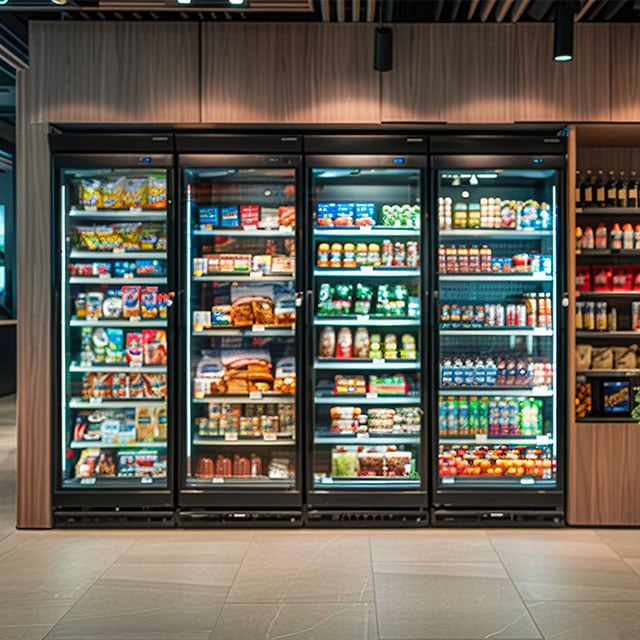The development of a Canada-wide clean fuel standard took a major step forward on December 19, 2020, with the federal government's release of draft Clean Fuel Regulations which, once finalized, will come into force in December 2022.
The Clean Fuel Regulations will apply to producers or importers of gasoline, diesel, kerosene and light and heavy fuel oils (referred to as "primary suppliers"). Each fuel type is assigned a lifecycle carbon intensity value, expressed in grams of carbon dioxide equivalent per megajoule of energy (gCO2e/MJ), which is meant to represent the emission intensity of such fuel throughout its entire lifecycle. The carbon intensity values serve as a baseline, against which primary suppliers will be required to make annual reductions. Beginning in 2022, each primary supplier must reduce the carbon intensity of the fuels it produces or imports by a minimum amount that increases each year, starting at 2.4 gCO2e/MJ in 2022 and culminating in a 12 gCO2e/MJ reduction requirement in 2030.
| 2021 | 2022 | 2023 | 2024 | 2025 | 2026 | 2027 | 2028 | 2029 | 2030 | |
| CI reduction requirement (gCO2e/MJ) | n/a | 2.4 | 3.6 | 4.8 | 6.0 | 7.2 | 8.4 | 9.6 | 10.8 | 12.0 |
These reduction requirements apply to each primary supplier on a company-wide basis, and will be expressed as an aggregate amount of tonnes of CO2e for the aggregate of all fuel types produced or imported by a primary supplier. There are, however, several exemptions. For example, the reduction requirements will not apply to aviation fuel, fuels exported from Canada, fuels sold or delivered for a use other than combustion (i.e., solvents), fuels produced and used at the same facility, fuels sold or delivered for use in a marine vessel with an international destination, or fuels sold or delivered for non-industrial use in remote communities.
The Clean Fuel Regulations will also retain the volumetric requirements under the existing Renewable Fuels Regulations (RFR) (2% low carbon fuel content in diesel/fuel oil, 5% low carbon fuel content in gasoline). Prior to repeal of the RFR in 2024, companies will be entitled to rollover any existing compliance units and convert those units into credits recognized under the Clean Fuel Regulations.
Compliance Options for Primary Suppliers
Primary suppliers must satisfy their emission reduction requirements by creating or acquiring compliance credits (each representing a lifecycle emission reduction of one tonne of CO2e). Primary suppliers can obtain compliance credits by:
- undertaking activities that generate credits for its own account;
- acquiring credits from others; or
- paying into a compliance fund to acquire credits at a price of $350/tonne (conceptually similar to "technology fund credits" under Alberta's TIER system).
Notably, credits acquired from the compliance fund option can be used to satisfy a maximum of 10% of a primary supplier's annual reduction obligation. In circumstances where primary suppliers are unable to acquire sufficient compliance units through the credit clearance mechanism (see below) they may carry forward up to 10% of their compliance obligation into subsequent compliance periods for up to two years. However, a 20% annual interest rate applies to amounts carried forward.
Credit Generation and Credit Market
While primary suppliers are the only entities required to reduce the lifecycle emissions of their fuels, the Clean Fuel Regulations create three distinct categories of compliance actions which allow primary suppliers as well as "voluntary credit creators" to create credits to ultimately be sold to primary suppliers to meet their emission reduction requirements:
- Compliance Category 1: actions undertaken to reduce carbon emissions of a fuel throughout its lifecycle (e.g., carbon capture and storage);
- Compliance Category 2: supplying low carbon intensity fuels (e.g., ethanol, biodiesel—including those fuels used to comply with existing federal and provincial renewable fuel requirements); and
- Compliance Category 3: transportation fuel switching, through end-users changing or retrofitting combustion devices to be powered by alternative energy sources such as electric vehicles, natural gas vehicles and hydrogen fuel cell vehicles.
When it comes to credit generation, the Clean Fuel Regulations draw heavily from the offset generation methodology used in Alberta's TIER system, with credit generation conditional on adherence to government approved quantification methods, subject to third-party verification. Four initial quantification methodologies have been identified for development in respect of Compliance Category 1 including: (i) carbon capture and storage; (ii) low-carbon intensity electricity generation; (iii) enhanced oil recovery; and (iv) co-processing of biocrudes in refineries and upgraders. In addition, a generic quantification methodology will be developed that can be utilized for activities which do not have their own bespoke quantification methodology, which will apply to such projects as energy efficiency, cogeneration, electrification and methane reductions.
Like credits purchased by contribution to a compliance fund, the Clean Fuel Regulations also place certain limits on the use of credits generated through the compliance categories. A primary supplier can satisfy only 10% of its reduction requirement through emission-reduction projects that rely on the generic quantification methodology. Similarly, while the Clean Fuel Regulations allow primary suppliers to create credits in relation to gaseous and solid fossil fuels and use those credits to offset liquid fuel reduction requirements, such cross-class credits can be used only to satisfy a further 10% of the primary supplier's reduction requirement.
Trading of credits created pursuant to the Clean Fuel Regulations may be conducted through bilateral negotiations between buyers and sellers similar to how the emission offset and emission performance credit market operates in Alberta under TIER. All credit transfers will need to be recorded with the Minister of the Environment and Climate Change. Further, both primary suppliers and voluntary credit creators will be subject to compliance reporting, record-keeping and third-party verification requirements similar to those under Alberta's TIER system and the federal output-based pricing system for large emitters pursuant to the Greenhouse Gas Pollution Pricing Act.
The Clean Fuel Regulations also contemplate a credit clearance mechanism (CCM) to facilitate the exchange of credits. A credit seller may pledge its credits to be sold pursuant to the CCM. Once credits have been pledged to the CCM, the credit seller is obligated to sell those credits at the CCM price (currently set at $300/tonne) and is not entitled to accept an offer to purchase the credits at a higher price. Where a primary supplier has not satisfied its reduction requirements by June 30 in a given calendar year, the primary supplier may purchase credits through the CCM. If there are not enough credits in the CCM to satisfy the requests of all primary suppliers, each primary supplier will be entitled to acquire a prorated share of the available credits.
Key Takeaways
The Clean Fuel Regulations, once implemented, will present compliance challenges for primary suppliers as well as credit generation opportunities for both primary suppliers and voluntary credit creators alike. Bennett Jones has extensive experience advising entities on regulatory compliance strategies, as well as GHG credit project development and marketing of GHG credits both in the compliance and voluntary markets. If you have any questions regarding the Clean Fuel Regulations including in respect of compliance strategies or how to capitalize on the low-carbon economy, please contact a member of our Climate Change or Regulatory practice groups.






















